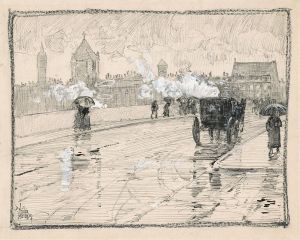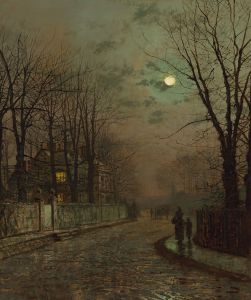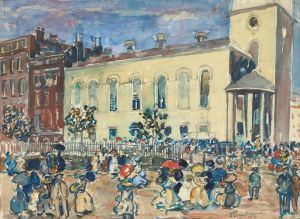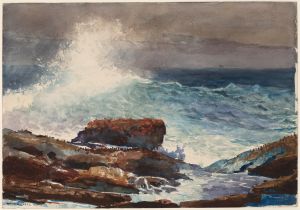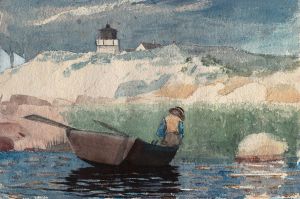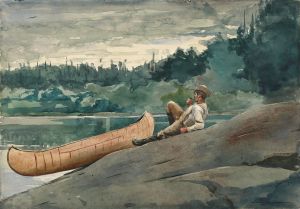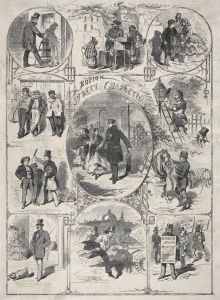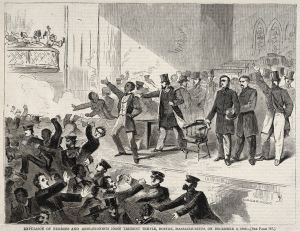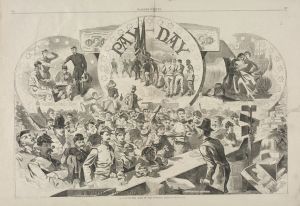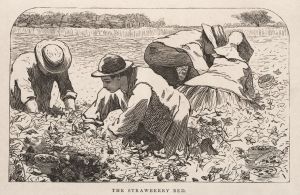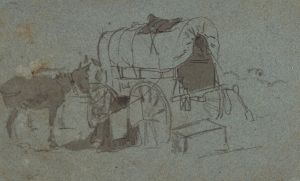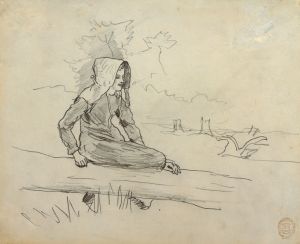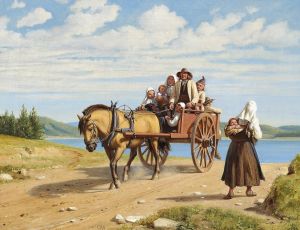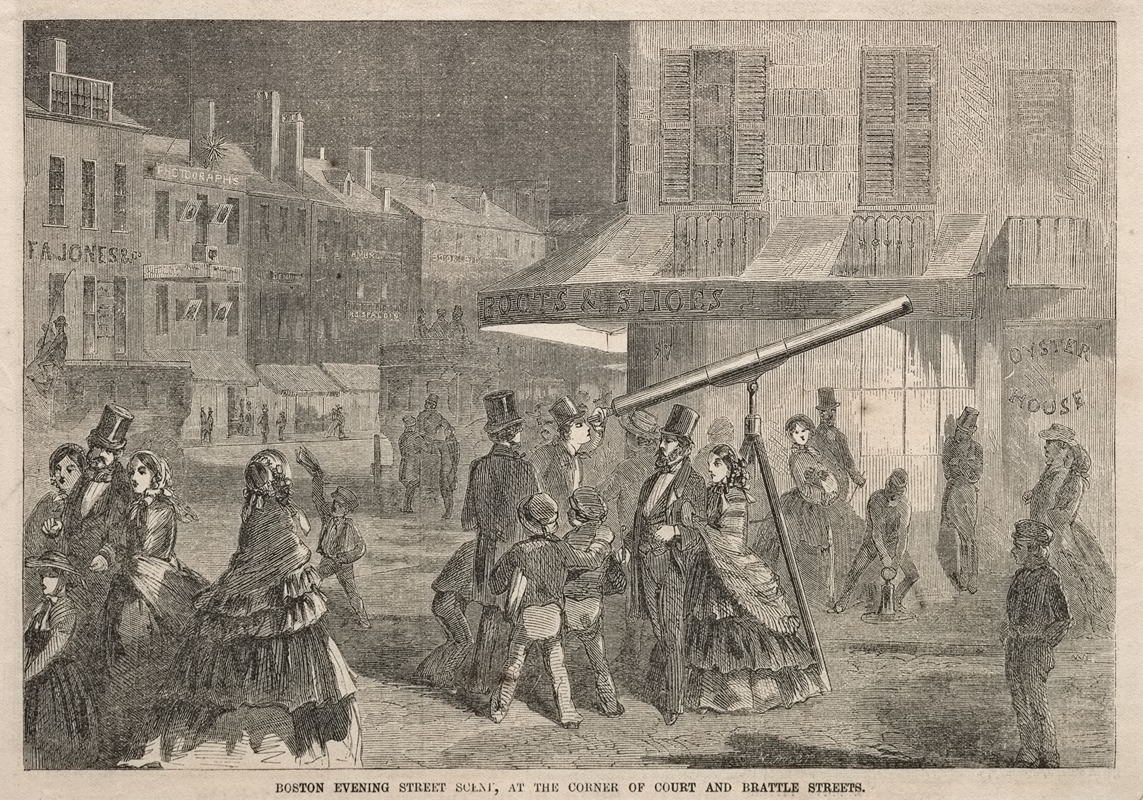
Boston Evening Street Scene, at Corner of Court and Brattle Streets
A hand-painted replica of Winslow Homer’s masterpiece Boston Evening Street Scene, at Corner of Court and Brattle Streets, meticulously crafted by professional artists to capture the true essence of the original. Each piece is created with museum-quality canvas and rare mineral pigments, carefully painted by experienced artists with delicate brushstrokes and rich, layered colors to perfectly recreate the texture of the original artwork. Unlike machine-printed reproductions, this hand-painted version brings the painting to life, infused with the artist’s emotions and skill in every stroke. Whether for personal collection or home decoration, it instantly elevates the artistic atmosphere of any space.
Winslow Homer, an American artist renowned for his landscape and marine subjects, created the painting "Boston Evening Street Scene, at Corner of Court and Brattle Streets" in 1859. This work is an early example of Homer's exploration of urban life, capturing a moment in the bustling city of Boston during the mid-19th century. The painting is executed in oil on canvas, a medium Homer frequently employed during his career.
The scene depicted in the painting is set at the intersection of Court and Brattle Streets, a location that was a hub of activity in Boston at the time. This area was known for its vibrant commercial and social life, which Homer captures through his detailed portrayal of the street and its inhabitants. The painting features a variety of figures, including pedestrians and horse-drawn carriages, moving through the dimly lit street as evening descends upon the city. The use of light and shadow in the painting effectively conveys the transition from day to night, a theme that Homer would continue to explore in his later works.
Homer's attention to detail is evident in the architectural elements of the buildings lining the street, as well as in the clothing and postures of the figures. This level of detail not only provides a snapshot of urban life in Boston during this period but also reflects Homer's keen observational skills and his ability to capture the essence of a scene. The painting is characterized by its realistic depiction of the urban environment, a hallmark of Homer's early work before he shifted his focus to more rural and maritime subjects.
"Boston Evening Street Scene" is significant not only for its artistic merit but also for its historical value. It offers a glimpse into the daily life of Bostonians in the 1850s, a time of significant growth and change for the city. The painting serves as a visual document of the era, providing insights into the social and economic conditions of the time. Homer's work during this period is often noted for its documentary quality, capturing the nuances of American life with precision and empathy.
This painting is part of Homer's early body of work, created before he gained widespread recognition for his later seascapes and genre scenes. It reflects his early interest in the dynamics of urban life and his ability to convey complex atmospheres through his art. While Homer is primarily celebrated for his later works, pieces like "Boston Evening Street Scene" are crucial for understanding the development of his artistic style and thematic interests.
Today, Winslow Homer is regarded as one of the foremost American painters of the 19th century, and his works are held in high esteem by art historians and collectors alike. "Boston Evening Street Scene, at Corner of Court and Brattle Streets" remains an important piece within his oeuvre, illustrating his early mastery of urban scenes and his capacity to capture the spirit of his time.





